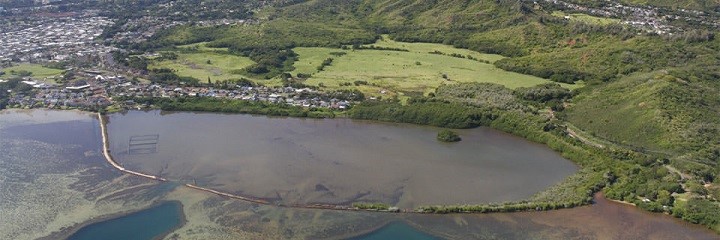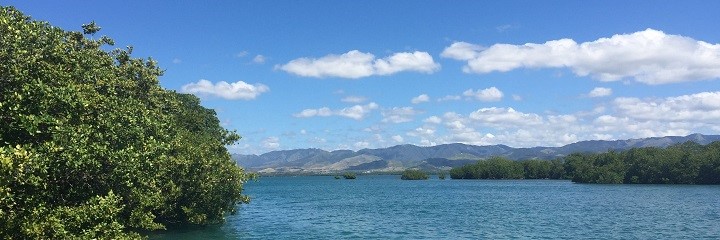- ABOUT US
- PROGRAM AREAS
- CONSERVATION APPROACH
- EDUCATION
- MULTIMEDIA
Corals and Estuaries — A Winning Partnership
National Estuaries Week, held every September, is a celebration aimed at increasing awareness of the country’s estuaries—such as the national estuarine research reserves—and encouraging people to become involved in the protection of these important natural resources. The National Estuarine Research Reserve System is a partnership between NOAA and coastal states, with a network of 29 spectacular sites designated to protect and study estuarine systems.
Below, get to know the reserves that are home to wonderful coral reef ecosystems.
He'eia is located in the southern portion of Kāne'ohe Bay — the largest sheltered body of water in the Hawai'ian Islands — on O’ahu. He’eia, the newest reserve in the system, was designated in 2017 and is managed by the University of Hawai'i Institute of Marine Biology. The reserve protects nearly 1,400 acres that include features like coral reefs, sand flats, and the He'eia stream. The reserve also protects traditional agricultural and heritage lands.

Jobos Bay, on the southern coast of Puerto Rico, was designated in 1981 and is managed by the Puerto Rico Department of Natural and Environmental Resources. The habitats in the nearly 2,900 acre reserve include coral reefs, seagrass beds, mangrove forests, and mud flats. Endangered species in Jobos Bay include the Hawksbill sea turtle, which feeds on sponges in coral reefs. Visitors can drop by the Jobos Bay Visitor Center, which has an exhibition room and a library.

Related Stories and Products
About Us

The NOAA Coral Reef Conservation Program was established in 2000 by the Coral Reef Conservation Act. Headquartered in Silver Spring, Maryland, the program is part of NOAA's Office for Coastal Management.

The Coral Reef Information System (CoRIS) is the program's information portal that provides access to NOAA coral reef data and products.
Work With US
U.S. Coral Reef Task Force
Funding Opportunities
Employment
Fellowship Program
Contracting Assistance
Graphic Identifier
Featured Stories Archive

Access the archive of featured stories here...
Feedback
Thank you for visiting NOAA’s Coral Reef Conservation Program online. Please take our website satisfaction survey. We welcome your ideas, comments, and feedback. Questions? Email coralreef@noaa.gov.
Stay Connected
Contact Us
NOAA’s Coral Reef Conservation Program
SSMC4, 10th Floor
1305 East West Highway
Silver Spring, MD 20910
coralreef@noaa.gov
